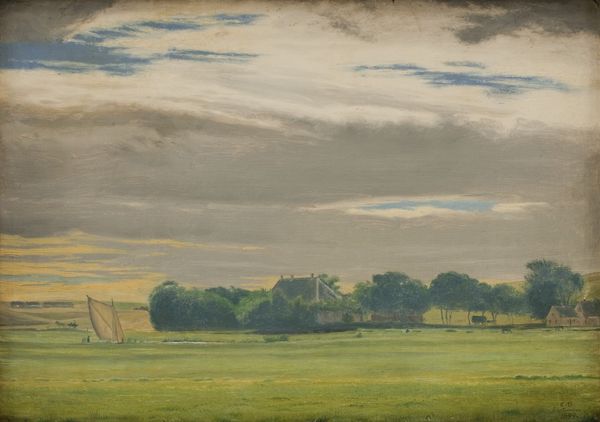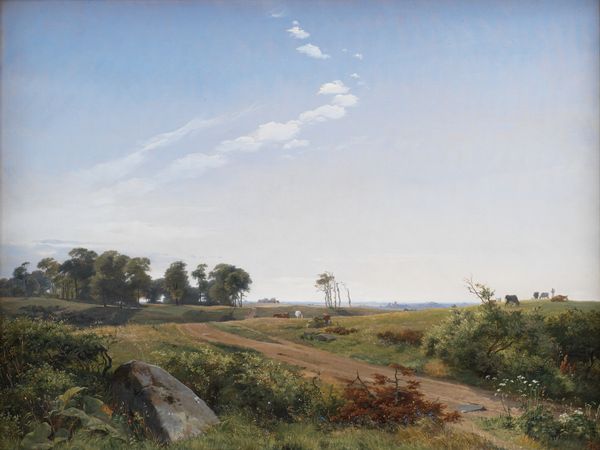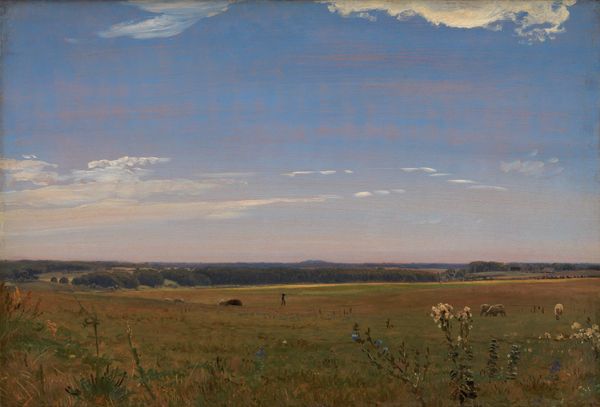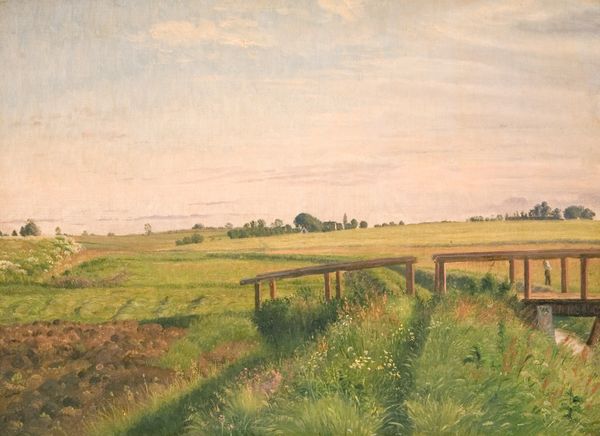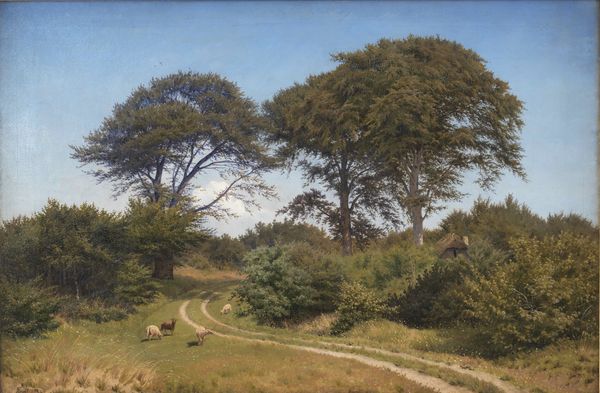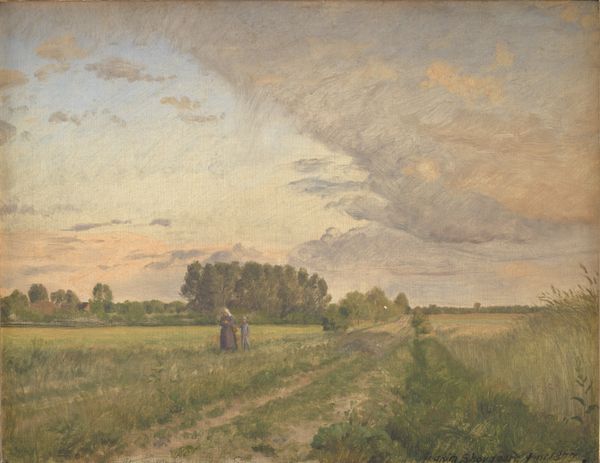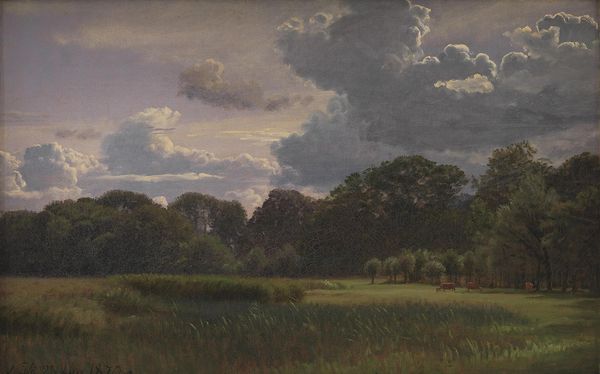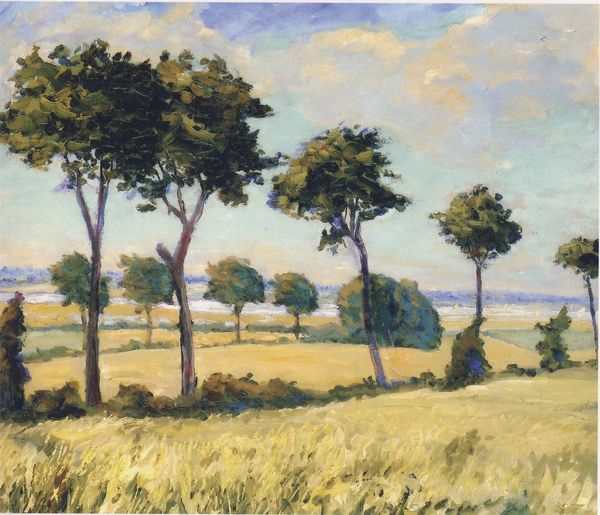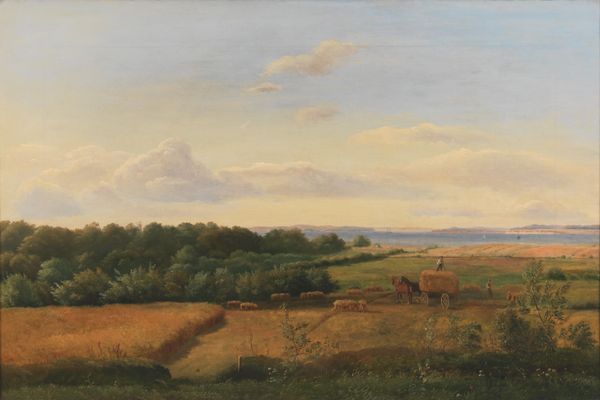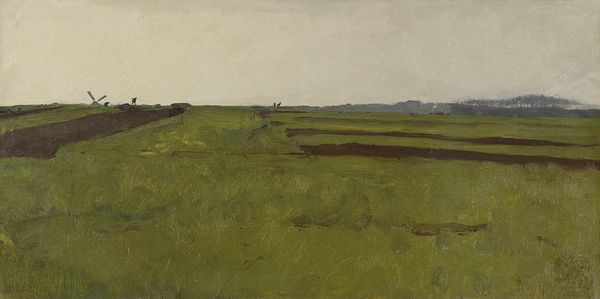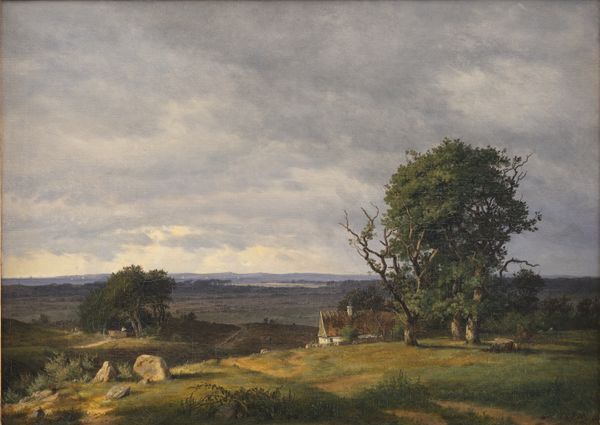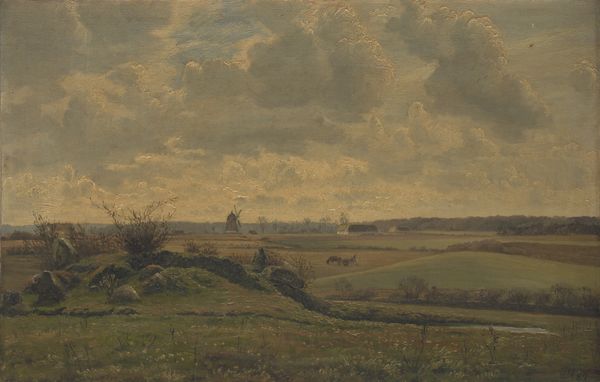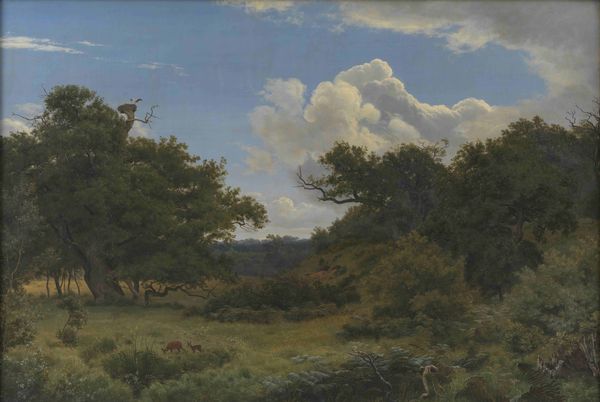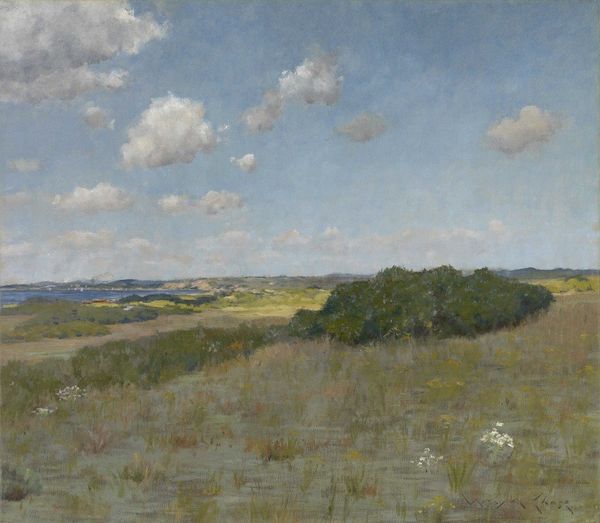
Dimensions: 25.8 cm (height) x 61.7 cm (width) (Netto)
Editor: So, here we have P.C. Skovgaard's "Engene ved Dortheaslyst," painted between 1871 and 1875. It's an oil-on-canvas landscape currently housed at the SMK. There’s a stillness to it; a peaceful expanse with fields and trees under a vast sky. What are your initial observations, focusing on the artistic choices Skovgaard made? Curator: The compositional structure immediately commands attention. Observe how the horizontal format accentuates the breadth of the landscape. Skovgaard manipulates tonal gradations, guiding the eye from the textured foreground – the rich, tactile rendering of the meadow – towards the ethereal horizon. Note the placement of the trees: how do they function within this spatial arrangement? Editor: I see how the trees provide a visual anchor, creating depth and contrasting with the open field. But how does his application of paint and use of light enhance the viewing experience? Curator: Precisely. Skovgaard’s brushwork is quite deliberate. Notice the impasto in the foreground, adding a palpable texture that simulates the feel of the grass underfoot. Conversely, the sky possesses a muted luminescence, achieved through delicate layering of paint. Do you perceive a strategic distribution of light and shadow here? Editor: Yes, the way the light catches certain parts of the field and the trees seems to add dynamism and a sense of movement. It avoids being static, despite its inherent calm. What would you say is the impact of this interplay? Curator: Consider this not as mere representation, but as a structured orchestration of elements. Light is deployed not just to illuminate, but to construct and deconstruct form, leading to a semiotic experience of being in nature, rather than simply seeing it. The brushstrokes create almost a language that decodes the experience. Editor: That's a very insightful approach. I realize the depth is achieved through contrasting techniques and thoughtful planning of space, light and brushstroke. Thank you. Curator: And consider too the potential socio-political readings that formal analysis provides. Such return to the land— its encoding and construction within artwork-- invites considerations about place and national identity. A rewarding reflection, indeed.
Comments
No comments
Be the first to comment and join the conversation on the ultimate creative platform.
